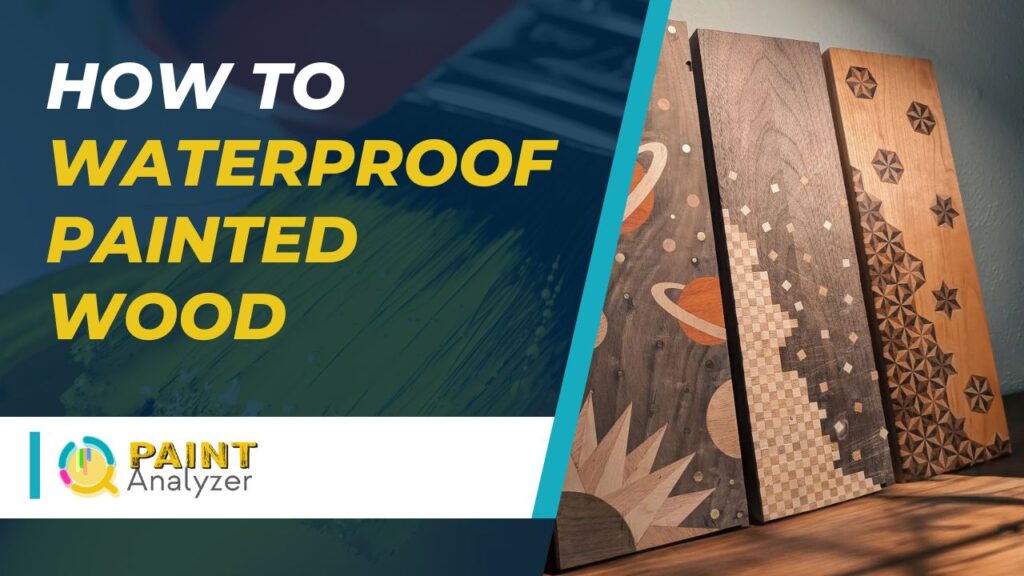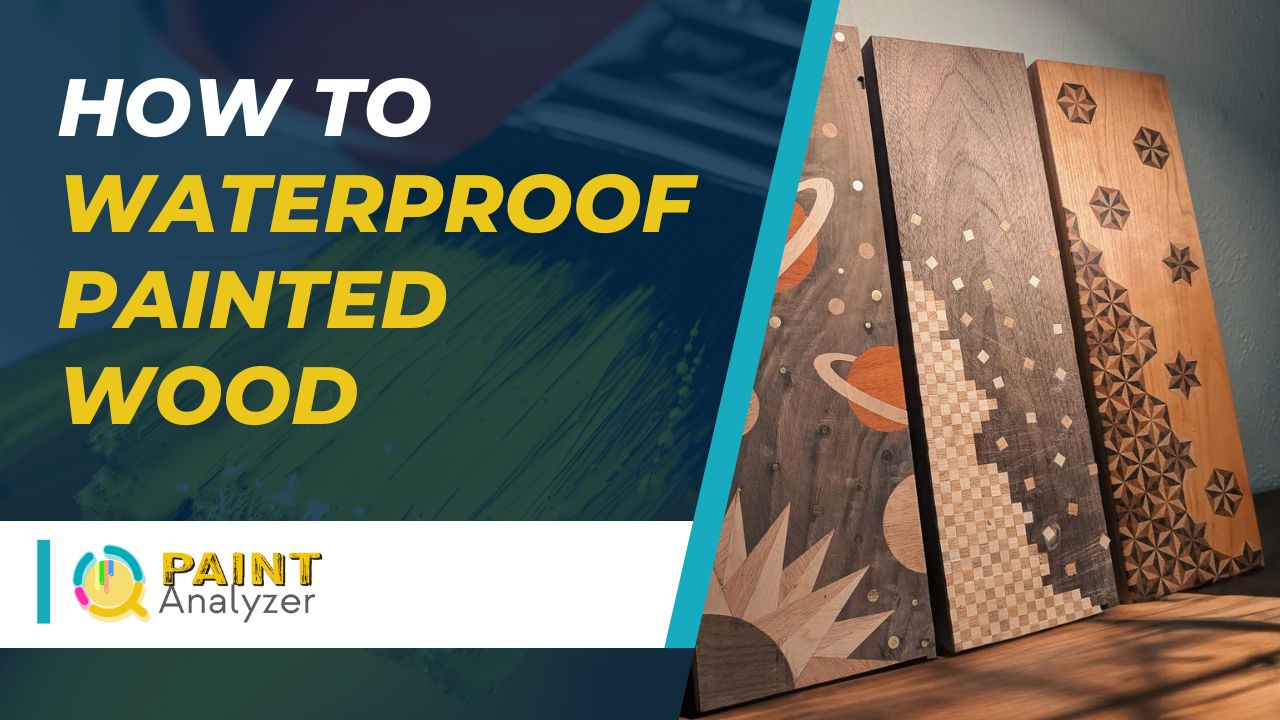Painted wood is a beautiful addition to any home, but keeping it looking its best can be tricky. Waterproofing your painted wood will help protect it from the elements and keep it looking new for years. There are a few different ways that you can waterproof painted wood.
One way is to use a sealer. This can be either a clear sealer or a tinted sealer. Another way to waterproof painted wood is to use waterproofing paint. There are many different types of waterproofing paints on the market.
You will need to choose the right type of paint for the job. With proper care and maintenance, your painted wood will last for many years.

How to Waterproof Painted Wood? A step-by-step guide
If you have painted wood and are worried about it warping or peeling in the future, you can take some steps to waterproof it. This will help to protect your investment and keep your painted wood looking great for a long time.
Step 1: Clean the Surface
Start by cleaning the surface of the wood that you will be painting. Use a mild soap and water solution to remove dirt, dust, or grime. Allow the surface to dry completely before proceeding to the next step.
Step 2: Sand the surface
Once the surface is clean and dry, you must sand it. This will help to rough up the surface so that the paint will have something to grip onto. Use fine-grit sandpaper and sand the surface in a circular motion. Once you have sanded the entire surface, wipe it down with a damp cloth to remove any dust.
Step 3: Apply a primer
Now it is time to apply a primer. This will help waterproof the surface and help the paint adhere better. Use a brush or roller to apply a thin primer layer to the surface. Allow the primer to dry completely before proceeding to the next step. You need to use a primer specific to the type of paint you will be using.
Step 4: Paint the surface
Now you are ready to paint the surface. Use a brush or roller to apply a thin layer of paint to the surface. Start with a light coat and then add additional coats as needed. Allow the paint to dry completely between each coat.
Step 5: Apply a sealer
Once the paint is dry, you will need to apply a sealer. This will help to protect the paint and also make it more waterproof. Use Polyurethane sealer. Apply a thin layer of sealer to the surface using a brush or roller.
You need to apply two coats of sealer, allowing it to dry completely between each coat. Each coat will take about 24 hours to dry completely. Sand and clean the surface in between coats.
How Can Painted Wood Be Waterproofed for Outdoor Use?
There are many products on the market, but the best ones to seal paint for outdoor use are polyurethane and Polycrylic.
Polyurethane
A synthetic resin called polyurethane is most frequently used as a wood finish. It comes in both water-based and oil-based formulations. It is more resistant to wear and tear than varnish and will shield the paint from fading, stains, and scratches. It resists dampness and won’t turn yellow over time.
Polycrylic
Polycrylic is a water-based resin that is most commonly used as a sealer for paint. It is available in both clear and pigmented formulas. It is less durable than polyurethane but will still protect the paint from scratches, stains, and fading.
Both products are available at most hardware stores. If you want to waterproof your painted wood for outdoor use, I recommend using a polyurethane or polycrylic sealer. These two paint sealers will keep your wood and paint safe for longer by withstanding the harsh weather outside for years.
When Should You Seal Painted Wood?
Wood painted with high-grade exterior paint does not require sealing. Most surfaces can be adequately protected with two or three coats of outdoor wood paint without a sealer. However, you may want to add a sealer to:
- Especially porous woods, such as redwood, cedar, and Douglas fir
- Woods that are exposed to harsh conditions, such as sun and wind
- Woods that are regularly cleaned with chemicals
When you use a sealer, be sure to choose one compatible with the paint you are using. Some sealers can yellow paint, so it is best to test the sealer on a small, inconspicuous area before applying it to the entire surface.
Will Waterproofing Painted Wood also Help with Lightening Grout After Painting?
Yes, waterproofing painted wood can help lighten grout after paint dried. It creates a barrier that prevents moisture from penetrating the wood, which can help prevent grout discoloration. Choose a waterproofing product specifically designed for painted surfaces for the best results in lightening grout after paint dried.
Can I Use the Same Waterproofing Technique for Painted Wood and Garage Walls?
Yes, you can use the same waterproofing technique, sealing garage walls with Drylok, for both painted wood and garage walls. Drylok is specifically designed to create a waterproof barrier on various surfaces, including painted wood and concrete garage walls. It provides long-lasting protection against water damage.
How to Protect Painted Wood from Water Damage?
Water damage is one of the most common problems faced by homeowners. Water can wreak havoc on your home and your belongings, whether it’s from a leaky roof, faulty appliance, or flooding.
If you have painted wood in your home, protecting it from water damage is especially important. Here are some tips for protecting painted wood from water damage:
Check the source of the water damage
Make sure your gutters are clean and in good working order if you have any. Check to determine when your downspouts are attached to the underground pipes are obstructed. You might need to get your gutters cleaned more frequently if you live in a neighborhood with plenty of trees.
Inspect your siding
Cracks, holes, and other openings in your siding can let water in and cause damage. Caulk any cracks and repair or replace any damaged siding.
Check your windows and doors
Windows and doors should be sealed with weather stripping to prevent water from getting in.
Inspect your roof
Missing or damaged shingles can cause water to leak into your home. Have a professional roofer inspect and repair your roof as needed.
Check for leaks in your basement or crawlspace
Waterproofing your basement or crawlspace can help prevent water damage by creating a barrier between the ground and your home. This can be accomplished through various methods, including installing a waterproofing membrane or sealant, installing a drainage system, or excavating the area and installing a French drain.
Take preventive measures
If you live in an area prone to flooding, consider installing a sump pump and waterproofing your basement or crawlspace.
The suitable method to Waterproof Wood
Conclusion
There are a few different ways to waterproof painted wood, but the most effective method depends on the paint type you’re using.
If you’re using an oil-based paint, you can waterproof it by applying polycyclic or polyurethane over the top. If you’re using water-based paint, you can protect it with a layer of wax.
No matter which method you choose, waterproofing your painted wood surfaces will help them resist damage from moisture, sun, and other environmental factors. So, follow these tips that we discuss above to waterproof your painted wood surfaces and enjoy their beauty

